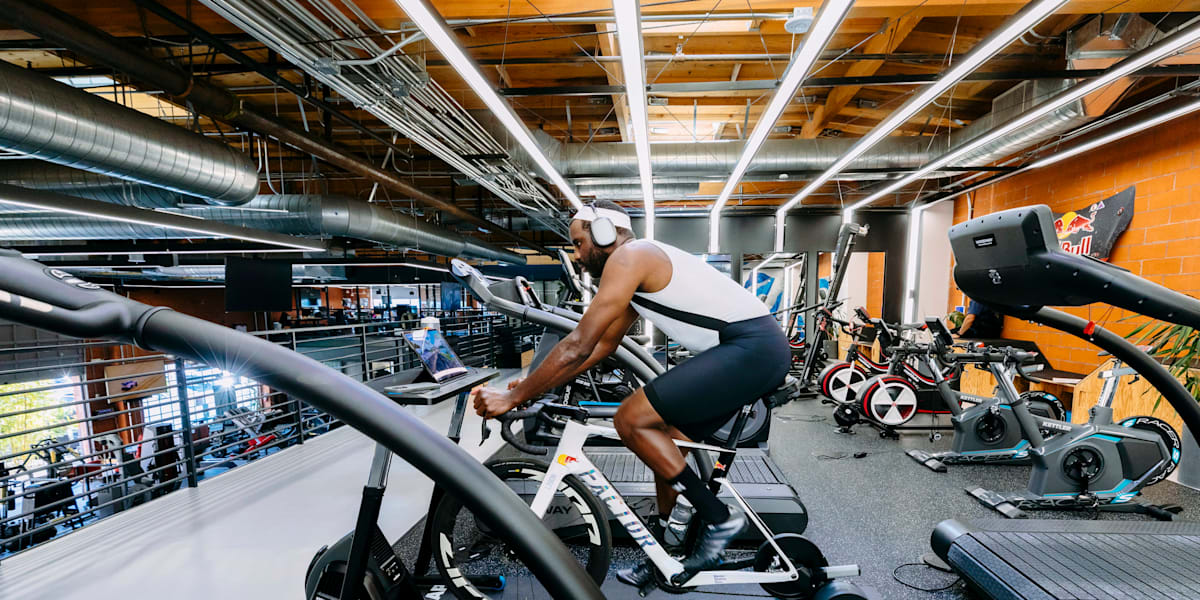Fitness
Train like Pro Cyclist Justin Williams

The pro cyclist, in injury-recovery mode, has gotten serious about nutrition and off-the-bike training.
This year is a comeback year for Justin Williams. The crit racer, who won a U.S. national championship in 2019 and Belize’s national road championship in 2021, has had his racing disrupted in the past few years—by COVID shutdowns, by obligations related to the pro team L39ion of Los Angeles he founded and manages and by a separated shoulder and other injuries. Williams is in the midst of a long, slow build to return to his best. “I’ll be really good by the end of this year,” he says. “And next year, I’m going savage mode on everybody.”
The gym serves as a kind of auto body shop for Williams. “A lot of my gym time is identifying issues and trying to remedy them,” he says. A repeatedly sprained ankle means Williams works with a slant board to loosen the joint. “I have overbuilt hip flexors, because I use my hips to compensate when I’m getting tired,” he says. Squats open his hips, while core exercises like planks improve his stability on the bike and help stave off fatigue.
Williams used to hate going to the gym, but he’s recently found purpose there and has come to love it. These days, he focuses on leg strength and mobility. “I love leg press,” says Williams. “It’s where I get to show off.” The seated position on the bike locks his body into a limited range of movement, so mobility exercises are especially important. Using a set of hurdles, he’ll do six or seven passes where he alternates among forward, backward and sideways steps. “Those always loosen up my hips and give me more mobility,” he says. “When I do those, I notice instantly that I’m better on the bike.”
As his comeback gets underway, Williams is mindful of all the things that will put him in position to win the biggest races. If all goes well, he gets to post up after an explosive sprint, but he knows that success requires more than pure speed—it takes a combination of power, endurance and tactical smarts.
“For me the last 10 seconds of a crit are the easiest part,” he admits. “It’s the two minutes before the last 10 seconds where my fitness really plays a role. My heart rate is spiked, and I’m trying to think my way through a sprint as I’m slowly but surely draining the tank. So success is all about managing those things so I can still have an explosive pop in the last 10 seconds.”
Williams must make hundreds of decisions and adjustments during a race. That’s hard when he’s maxed out physically. At home on his trainer, he practices by singing songs during intervals. “When I get to the point where I can’t predict the next lyric, I know I’m in the box. He also races local crits in the early season to refine his skills. “Everyone knows me and is racing against me,” he says. “I have to be sharper in how I make decisions and use my power.”
“As I’ve gotten a bit older, nutrition has become the most important thing,” Williams says. “It can mean the difference between whether I retain 90 percent of what I do in a workout versus 50 percent.” To that end, he eats small meals every three hours and uses a meal-prep service to manage portion control. On the bike, he pays special attention to his carb intake—getting 60 grams per hour on endurance rides and 100 grams per hour when he’s racing.
Williams wins races by outsprinting everyone at the end of a long endurance ride. This requires work on and off the bike. In the gym, he does tons of plyometrics. And on the bike, it’s all about repetition and effort. “My brothers and I do a lot of sprinting in training, working on form and reaction time,” he says. “When you do explosive efforts your muscles get these little microtears that get more rubbery when they heal, which helps you sprint better.”












